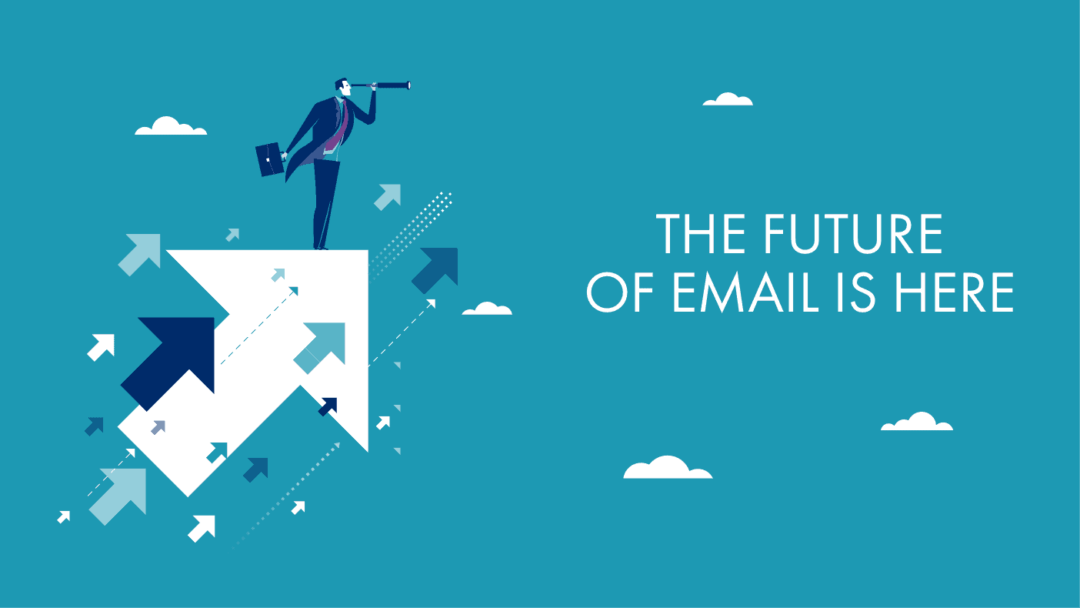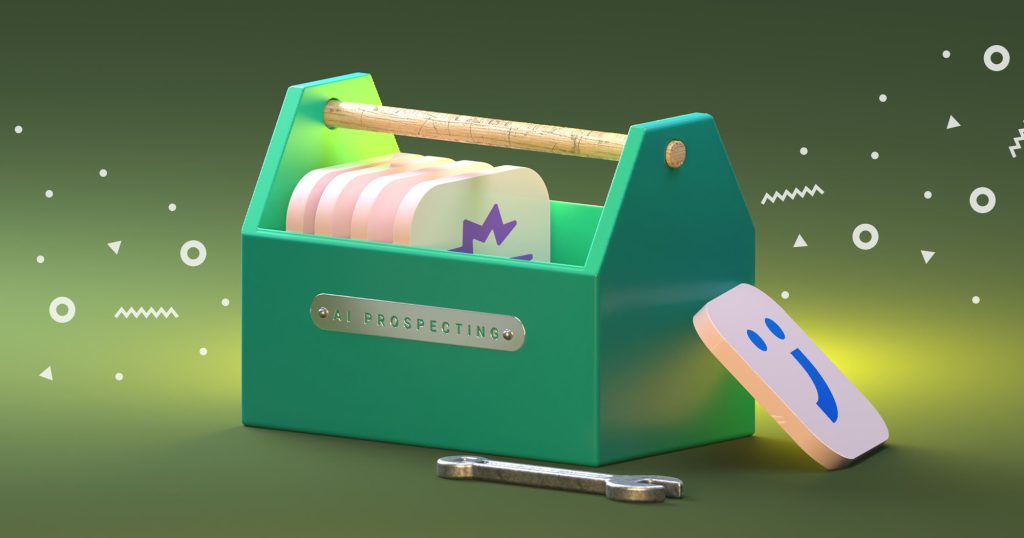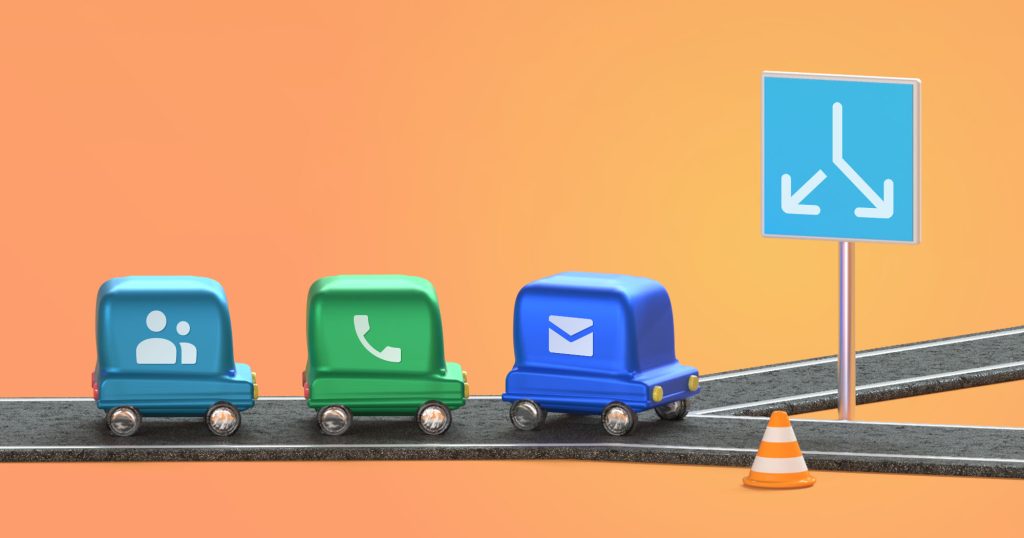Hi, Nina here from Etools, an outreach toolkit that’s complementary to Reply. Have you ever wondered how long email will stick around? Is it being replaced right now? And, are we using something doomed to extinction? Who even predicted that?
Let me make it clear. Even though email is a web dinosaur, you won’t be visiting him soon in museums.
On the contrary, this modern dinosaur has a new shiny collar, he is going to pet beauty salons, he also has some clothes for the winter, and you have to take him for a walk few times a day or even more.
Dinosaurs are needy, so plan your time wisely.
Oldie but goldie
It all started in 1971 when a computer engineer Raymond Tomlinson sent the first email.
What might not seem as a very distant past is relevant in rapidly changing technological environment, 46 years ago can be compared to a millennium ago.
Yes, email is old. But who said that old isn’t gold?
What makes it so great is that it is evergreen, like The Beatles songs.
To be more precise, like the song I want to hold your hand.
Email is basic, neutral and an everlasting service that just can’t go away.
Remember your first day at work for a second. You got your own email address, right? You’re part of the team and this is the base for your communication inside and outside the company.
And just think about email’s presence everywhere. You want to verify a business bank account? Email. Facebook? Email.
To revive your password. Email. Everything from order confirmations to updates are sent via email.
According to the Radicati report, in 2015 the number of business and consumer emails sent and received per day was over 205 billion, and in 2017 it will reach 269 billion, “and it is expected to continue to grow at an average annual rate of 4.4% over the next four years, reaching 319.6 billion by the end of 2021”.
Well, it doesn’t sound like email communication is planning to leave. Quite the contrary, it’s rapidly spreading and is considered thepast and the future of business communication. Like Alexis C. Madrigal said, email is “the cockroach of the Internet”, and “this resilience is a good thing.”
As technology is evolving so does the use of email.
Email future is not attached anymore to our desktop computers, it’s basically in your hands all the time.
Results show that “in April 2016, mobile opens rose to 56% while desktop opens maintained at 19%. Meanwhile, webmail decreased to 25%”.
Now tell me, who is really holding your hand?
Notification hell
Searching through your inbox can be an exhausting and time-consuming task.
What once was a sending and receiving task became the mainstream for everything and everyone.
Inboxes became overflowed with junk, work, newsletters, advertising, promotions, personal conversations.
For most companies it is difficult and even impossible to function without email.
Everyone (or the lucky ones) will know where you are and they will knock on your door with a sign and deliver the mail.
The biggest problem is that you don’t want to be interrupted every second and the mail you get is not always relevant, but it is, as sure as hell, abundant.
Not to mention that you are walking towards the door every time they knock.
A report from the British Psychological Society and the Future Work Centre states that even though emails are making our communication easier and quicker, its widespread usage and popularity “can be a source of major frustration, anxiety and lost productivity”.
And it’s not just the volume of emails that causes stress, it’s our bad habits of managing emails and our need to be in control.
In conclusion, “email is a ‘double-edged sword, it has definite advantages but also some obvious drawbacks”.
Email is changing and so should you
And not just email, everything is expanding, spinning and changing, and so should you.
If you don’t keep up with the times, you will find yourself tilting at windmills, in other words, you will lose an imaginary battle, in this case, with your inbox.
Even though we are not seeing it clearly, our inboxes are getting smarter.
Spam filters have improved. Gmail spam filter uses a more sophisticated approach to analyze incoming mail, and its overall phishing protection improved “thanks to new machine learning signals” (Source).
“In fact, less than 0.1% of email in the average Gmail inbox is spam, and the amount of wanted mail landing in the spam folder is even lower, at under 0.05%.” (Source)
A lot of apps are trying to solve the problem of clogged inboxes.
If you want to get a cleaner inbox and manage easily your subscriptions you can use Unroll.me.
And if you need something mobile-friendly, you can check out Google Inbox.
It doesn’t see your inbox in an old classical way, it looks at it more as a “task-focused message management tool”.
So when your emails come you can process them as a task.
Or Boomerang, which lets you schedule and archive emails, and set up follow ups emails.
Sorting your inbox can even be a game with the app The Email Game.
It restricts your time and gives you 5 seconds to decide what to do with your email.
Just to mention, even Microsoft gave a new job position to assistant Cortana, so she will from now on read your emails and remind you of your commitments.
You can find more about these inbox organization tools here.
So-called “email killers”
It is true that people are not using email as they once were.
A lot of work-related messaging and friendly chats have been relocated to new communication tools.
These tools really made a big difference in how we communicate now, and the change will be more visible in years to come, shaping the business communication in the future.
Real-time communication platforms like Slack, Asana, Trello, Basecamp, HipChat, Gchat, Yik Yak, Snapchat, Facebook, Instagram, WhatsApp and Viber, took their parts in communication and our inboxes felt a great relief. But, the question is – are we living in a post-inbox world? And can these “email killers” really kill email?
Probably not.
Email is the core of web communication and even these platforms rely on email.
The future of email marketing is more likely to be the integration with new platforms.
Slack is a tool to communicate with a specific group of people, and when it comes to external communication we still use email.
Stewart Butterfield, co-founder of Slack, admits in an interview that
Email talks business
So, yes, you can use Slack to reach someone in your team or you can use Facebook or Twitter to communicate with various people, most of them your friends.
But when it comes to establishing business relationships and communicating with clients or partners it all comes to good old fashion email.
It may sound funny, email is more personal media when it comes to business.
Some said that social media was threatening to push down email marketing. It still hasn’t happened. Approximately 60% of internet marketers said they believed email marketing outperforms social media.
The other 40% said that email marketing and social media were different. Email is better
Having the same amount of email subscribers and Facebook fans is not the same. (Source)
says Stuart Marler from Retriever Digital. Your prospects are maybe spending more time on social media, but your email is still making a greater impact.
Darek Halpren made a little experiment to show how important it is to build your email list.
When he sent the link to his Twitter followers he sent 300 clicks to his website, and when he sent the same link to the similar amount of email subscribers he sent 4200 clicks to his web site.
And as he concludes, the difference between the number of emails you get and the number of Twitter or Facebook post you see, speaks for itself.
Your message can be 1 in 100 emails or 1 in 1000 social media updates.
Scrolling through social media brings a lot of distraction, unlike email.
If and when you pass the first level of convincing your prospects to open and read your email, the real one-on-one game starts.
Remember, that’s what a good email marketing is all about and you can be a king of that game.
Email marketing also has the higher conversion rates that are very much related to the ability to personalize your messages and deliver targeted content based on different variables in a behavior of your subscribers.
And it is known for its high Return on Investment (ROI).
According to National client email report, email has an average ROI of 3800%.
So instead of switching completely to social media, you should build your email list and a strong email marketing strategy.
You will see better results for a much lower investment.
Don’t get me wrong, I don’t advocate that social media shouldn’t be used for marketing, these platform can also be very effective, just in a different way.
You need to sort the differences and apply your goals in the correct spot.
Social media can be a great platform to increase your visibility and brand recognition.
On the other hand, email marketing is the perfect tool to connect with your online prospects, drive sales and convert leads into customers.
It has a wide reach, can target efficiently, and can be personalized, besides, it’s a great tool to maintain and develop a relationship with your prospects.
You can find more data-backed email marketing stats here.
To the future, and beyond
The future is just around the corner, so let’s talk about now.
I’ve read this great Email Marketing Trendbook for 2017.
In the book, three of ExpertSender’s email experts, Krzysztof Jarecki, Aleksander Heba and Adam Ambrożewicz talked about some of the trends that might shape future of email marketing in 2017.
More context-driven communication.
A lot more emails will be using context driven data that will be based on real-time variables that will be in accordance with the moment-of-open. This is going to make already personalized emails even more relevant by using the user’s current environment.
Chatbots will be complementary to email.
More integration between chatbot and email channels is expected, like “running automated workflow, sending confirmation emails, abandoned shopping cart emails, allowing users to sign up to a newsletter and then send that newsletter with segmentation data that can also be pulled from chat sessions.”
More eye tracking tests.
The eye tracking technology was used mostly to test websites, but as the technology evolves, now it’s is possible to run quick and inexpensive eye tests also on emails. In the early stages of campaign testing, you can gather better results on how to, for example, improve your CTA conversions.
Conversational tone e-commerce.
Don’t be too serious. What you need to go for in your email is a conversational, natural tone. People want to relate to you in the way they relate to others in their everyday life. You should be real and you should write the way you talk.
Predictive lead scoring.
More businesses generate scores automatically by integrating models that are employing Machine Learning and Artificial Intelligence. In other words, they use predictive intelligence to make predictive lead scoring. This kind of automatic AI tools can help you “get the right content to the right person at the right time.”
Email content is getting shorter.
Mobiles are now the most used device for viewing emails and only 27-41 characters of a subject line are visible on the majority of mobile devices. It’s time to think and write even shorter but still make a point.
Machines will match subscribers with content.
“Creating segments based on the appropriate criteria will provide for better targeted content”, but with an overload of data we will have to rely on algorithms and machines to do this automatically. Algorithms will be using “automated data feeds from different channels, and a single customer view in your CRM will become a norm.”
Cross-channel data will increase the effectiveness of email.
Cross-channel measurements and attribution will become the top priority. With additional data from other channels we will be able to better divide and target our customers.
Email is here to stay
The reason is very simple.
You cannot cut out the base of web communication built on a solid foundation.
It might be old but its purpose is evergreen and email is still adapting and evolving in an ever-changing technological world.
Even though we are switching to new platforms of communication, the true power of email should not be disregarded.






